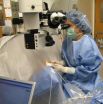(Press-News.org) PITTSBURGH, July 11 – A new method for scoring the severity of illness for patients after cardiac arrest may help to predict their outcomes, according to researchers at the University of Pittsburgh School of Medicine. Most importantly, their findings, published in the early online version of Resuscitation, also show that none of the severity categories rules out the potential for a patient's recovery.
"Traditionally, we have used historical or event-related information, such as initial cardiac rhythm or whether someone witnessed the collapse, to categorize these patients upon arrival at the hospital," said Jon C. Rittenberger, M.D., lead author and assistant professor of emergency medicine. "Unfortunately, more than 10 percent of the time, such information is unavailable, which limits our ability to tailor therapies, counsel families about prognosis or select patients for clinical trials."
Cardiac arrest is the most common cause of death in North America, resulting in approximately 350,000 deaths each year.
The researchers looked at retrospective data for more than 450 post-cardiac arrest patients treated at UPMC Presbyterian between January 2005 and December 2009. Both in-hospital and out-of-hospital cardiac arrests were included. In 2007, the hospital implemented a multi-disciplinary post-cardiac arrest care plan, including therapeutic hypothermia, or cooling of patients to minimize brain damage.
Four distinct categories of illness severity were identified based on a combination of neurological and cardiopulmonary dysfunction during the first few hours after restoration of a patient's spontaneous circulation. The researchers looked at rates of survival, neurologic outcomes and development of multiple organ failure for patients in each category, and found wide variations among the groups.
"Now, objective data available to the clinician at the bedside during initial evaluation may provide a better way of predicting outcomes and guiding the decisions of families and clinicians. We found that the category of illness severity had a stronger association with survival and good outcomes than did such historically used factors as initial rhythm of arrest or where it happened," said Dr. Rittenberger. "Our results indicate that illness severity should be carefully measured and accounted for in future studies of therapies for these patients."
###
Co-authors of the study include Samuel A. Tisherman, M.D., Margo B. Holm, Ph.D., Francis X. Guyette, M.D., M.P.H., and Clifton W. Callaway, M.D., Ph.D., all of the University of Pittsburgh.
The research was supported by a grant from the National Center for Research Resources. Dr. Rittenberger is also supported by an unrestricted grant from the National Association of EMS Physicians/Zoll EMS Resuscitation Research Fellowship.
Pitt team finds way to classify post-cardiac arrest patients to better predict outcomes
2011-07-12
ELSE PRESS RELEASES FROM THIS DATE:
Owl study expands understanding of human stereovision
2011-07-12
Rockville, Md. — Using owls as a model, a new research study reveals the advantage of stereopsis, commonly referred to as stereovision, is its ability to discriminate between objects and background; not in perceiving absolute depth. The findings were published in a recent Journal of Vision article, Owls see in stereo much like humans do.
The purpose of the study, which was conducted at RWTH Aachen (Germany) and Radboud University (Nijmegen, Netherlands), was to uncover how depth perception came into existence during the course of evolution.
"The reason why studying ...
Health-care practitioners' stories can aid medical device designers
2011-07-12
Health care laws to protect patients' privacy make it nearly impossible for medical device designers to develop and test the safety and usability of medical products by observing use in an actual practitioner-patient setting. As a result, usability errors and hazards may be overlooked, with the potential for devastating consequences. In the recent issue of Ergonomics in Design, human factors/ergonomics researchers found that storytelling as a qualitative research method was a more effective—and stimulating—way for health care practitioners to provide valuable insights during ...
Chicks dig certain types of music
2011-07-12
What accounts for the sounds we like to hear? Is it something about the properties of our auditory systems or brains? Or are such tastes learned? Two-month-old human infants show a preference for consonant, or gentler harmonies over more dissonant or harsher ones. But it's still impossible to know whether that preference is inborn, since the babies may have been exposed to certain sounds, even in utero.
Birds show similar behaviors: they can distinguish between different kinds of sounds and certain species are attracted to certain sounds. But because no one had experimented ...
Even before language, babies learn the world through sounds
2011-07-12
It's not just the words, but the sounds of words that have meaning for us. This is true for children and adults, who can associate the strictly auditory parts of language— vowels produced in the front or the back of the mouth, high or low pitch—with blunt or pointy things, large or small things, fast-moving or long-staying things.
Do the same principles apply for young infants, and not just to things, but also to abstractions? A new study by Marcela Peña, Jacques Mehler, and Marina Nespor, working together at the International School for Advanced Studies, in Trieste, ...
UC Riverside physicists discover new way to produce antimatter-containing atom
2011-07-12
RIVERSIDE, Calif. – Physicists at the University of California, Riverside report that they have discovered a new way to create positronium, an exotic and short-lived atom that could help answer what happened to antimatter in the universe, why nature favored matter over antimatter at the universe's creation.
Positronium is made up of an electron and its antimatter twin, the positron. It has applications in developing more accurate Positron Emission Tomography or PET scans and in fundamental physics research.
Recently, antimatter made headlines when scientists at CERN, ...
More oxygen in eyes of African-Americans may help explain glaucoma risk
2011-07-12
AUDIO:
Optic nerve damage from glaucoma seems to be at least partly related to damage from byproducts of oxygen in the eye. now, measuring oxygen levels during eye surgery, researchers at...
Click here for more information.
Measuring oxygen during eye surgery, investigators at Washington University School of Medicine in St. Louis have discovered a reason that may explain why African-Americans have a higher risk of glaucoma than Caucasians.
They found that oxygen levels ...
Too much sitting may be bad for your health
2011-07-12
San Diego, CA, July 12, 2011 – Lack of physical exercise is often implicated in many disease processes. However, sedentary behavior, or too much sitting, as distinct from too little exercise, potentially could be a new risk factor for disease. The August issue of the American Journal of Preventive Medicine features a collection of articles that addresses many aspects of the problem of sedentary behavior, including the relevant behavioral science that will be needed to evaluate whether initiatives to reduce sitting time can be effective and beneficial.
"Epidemiologic and ...
The metabolic effects of antipsychotic drugs
2011-07-12
07/07/11, Clearwater Beach, FL. Research to be presented at the upcoming annual meeting of the Society for the Study of Ingestive Behavior (SSIB), the foremost society for research into all aspects of eating and drinking behavior, may explain why some antipsychotic drugs can promote overeating, weight gain, and insulin resistance.
Olanzapine, an atypical antipsychotic drug approved by the FDA for the treatment of schizophrenia and bipolar disorder, has been associated with body weight gain and impaired glucose homeostasis in humans and in experimental animals. As part ...
Feeding hormone ghrelin modulates ability of rewarding food to evoke dopamine release
2011-07-12
07/07/11, Clearwater Beach, FL. New research findings to be presented at the upcoming annual meeting of the Society for the Study of Ingestive Behavior (SSIB), the foremost society for research into all aspects of eating and drinking behavior, finds that ghrelin, a natural gut hormone that stimulates feeding, also modulates the ability of tasty food and food-related cues to alter dopamine levels within the striatum, a critical component of the brain's reward system.
Scientists measured dopamine in 'real-time' while rats ate sugar, a highly rewarding food. Administering ...
Molasses extract decreases obesity caused by a high-fat diet
2011-07-12
07/07/11, Clearwater Beach, FL. Experimental results to be presented at the upcoming annual meeting of the Society for the Study of Ingestive Behavior (SSIB), the foremost society for research into all aspects of eating and drinking behavior, suggests that dietary supplementation with molasses extract may provide a novel approach for weight management in humans.
The study, conducted in mice by Richard Weisinger, Ph.D., investigated the impact of adding molasses extract to a high fat diet. Molasses extract is rich in polyphenols, a group of chemical compounds found ...

